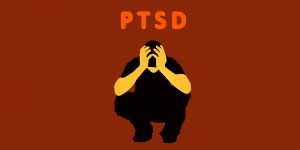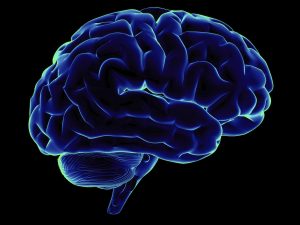The Traumatized Brain: An Interview with Dr. Jennifer Sweeton

Dr. Jennifer Sweeton is a licensed clinical psychologist and a nationally-known speaker on trauma treatment. Her blog on Psychology Today features posts on trauma, stress, emotional regulation, resilience, happiness and wellbeing, and more. She is also the founder and execute director of the nonprofit organization Workings of Wellbeing.
Interview
First off, I want to thank you for your time. I see you’re a Stanford University alum and licensed clinical psychologist, specializing in Post-Traumatic Stress Disorder (PTSD), women’s issues, and neuroscience applications to psychotherapy. What inspired you to study these topics?
That’s a tough question! The path my career has taken has not been linear or predictable. In college I studied computer engineering and believed I’d become a programmer. My interest in programming led me to quantitative psychology, and then cognitive psychology, and from there my interests broadened to include neuroscience, math, philosophy, feminist theory, and psychology (more broadly). I ended up graduating college with degrees in cognitive psychology and French (I love languages!), and went to graduate school to study affective neuroscience, which is the study of emotion in the brain. While in graduate school I realized that I wanted a way to apply what I was learning about the brain, and this prompted me to study clinical psychology. This has been a fantastic fit for me, since I’m able to apply brain research to psychotherapy and translate research findings into treatments and interventions that help people change their brains.
With regard to the decision to specialize in trauma, I don’t think this was something that I deliberately chose at any specific time. I remember being told during graduate school by a professor that I was “made for trauma,” and this surprised me at the time for some reason. It wasn’t until late in my postdoctoral year that I made the decision to really focus on trauma and women’s issues, after some personal and professional experiences convinced me that these were the topics I wanted to commit to. I’m very grateful for all of the experiences that have led me to where I am now!
You’re also a director of the nonprofit organization Workings of Wellbeing. What is the organization’s mission?
Workings of Wellbeing is a non-profit organization dedicated to teaching practical, accessible skills to enhance wellbeing in individuals, groups, and organizations. It is comprised of mental health professionals living across the US.
Your article “This Is Your Brain on Trauma” was a great read. You specialize in PTSD; would you mind providing our readers with a sort of basic definition of what a traumatic event is?
People experience events differently depending on a variety of factors, including past experiences, their epigenetics, presence of risk or protective factors, etc. Broadly speaking, a traumatic event is one that overwhelms your coping resources and severely disrupts your nervous system. Common examples of traumas include sexual violence, war, natural disasters, near-death experiences, abuse, neglect, sudden loss, or witnessing others being severely injured or killed.

You stated that not every person who experiences a traumatic event will go on to develop PTSD. Are there certain people/personality types that are more susceptible to developing PTSD than others?
There are risk factors that make a person more susceptible to developing PTSD after a traumatic event, and protective factors that can guard against later onset of PTSD. Risk factors can be environmental (such as past exposure to, and severity of, traumas), demographic (women are at higher risk than men), biological (individuals with higher resting heart rates), cognitive (such as a history of developmental delays), or familial. Additionally, a prior psychiatric history can make an individual more susceptible to developing PTSD after a trauma, and the way an individual reacts during the time of the trauma can also make them vulnerable to PTSD (if, for instance, they experience a freeze response and dissociation). However, there are also several protective factors that can help inoculate a person against the effects of trauma. Protective factors include social support, having coping skills, and having access to medical and mental health services. The most important of these is social support!
You stated that higher brain areas, such as the prefrontal cortex (thinking center) and the anterior cingulate cortex (emotional regulation center), are underactivated in the traumatized brain. Why do you think these important cortical areas weaken seemingly when needed the most? 
This is an empirical question that is difficult to answer with certainty, but we know that when the amygdala (called the “smoke alarm” or “fear center” of the brain) activates, one of the things it does is dull, or even completely shut down, the prefrontal cortex (“thinking center”) and cingulate (“emotion regulation center”). In other words, when you feel stress, fear, or upset, the fear center of your brain begins to suppress the functioning of the thinking and emotion regulation centers of your brain, making it difficult to think clearly or function well. In PTSD, we see overactive amygdalar activation, and suppressed functioning of the prefrontal cortex and cingulate! Thus, PTSD treatment needs to focus on re-regulating the amygdala and downregulating it so that the thinking and emotion regulation centers can re-activate. When this happens the person is better able to concentrate, problem solve, think clearly, connect with others, and be mindful.
In your article, you noted that approximately 50% of the population will experience some sort of traumatic event in their lifetime. Is there anything we can do to protect ourselves from life’s traumas and prevent the development of PTSD?
Yes. Adopting a daily mindfulness routine is highly recommended. To regulate the amygdala and keep the prefrontal cortex and cingulate activated, try incorporating a short (5-10 minutes) diaphragmatic breathing exercise into your morning routine. Additionally, practice a meditation-based practice each day as well (5-10 minutes is fine). Meditations strengthen the prefrontal cortex and cingulate and integrate the functioning of these two areas so that they can work together to solve problems. Diaphragmatic breathing works bottom-up, through the body, activating the vagus nerve and de-activating the amygdala. Creating a brain that is “top heavy,” meaning that its activations are stronger in the higher, more cortical areas (such as the prefrontal cortex) compared to the fear brain, can help you cope better with stressors when they occur.

Additionally, we need to remember that humans cause a lot of trauma. Taking a broader view of trauma is necessary, I think. Just as we need to focus on helping survivors of trauma heal, we need to also focus efforts on addressing the social and systemic causes of trauma in society. As the old feminist statement goes, “The personal is political.” The problem is not that we experience isolated, unrelated traumatic events through life, rather, there are systems of oppression in place that perpetuate trauma and likely will continue to unless/until they are dismantled. Examples include racism, sexism, cisgenderism, classism, heterosexism, ageism, ableism, colonialism, and other –isms. If we are committed to reducing trauma and helping people, we have to acknowledge these –isms, explore ways we might contribute to them, and be willing to take action against them.
What advice do you have for those who are dealing with trauma but may be reluctant to try or unable to afford traditional psychotherapy?
Seek social support. If a person has just one or two positive social influences, it can go a long way in helping a person heal.

Additionally, consider a low cost alternative to traditional psychotherapy such as online therapy (betterhelp.com and talkspace.com are examples of low-cost online psychotherapy businesses) or research community mental health resources in your area, as they are often low-cost. Finally, consider reaching out to the National Suicide Prevention Lifeline at 1-800-273-8255.
Do you have any additional resources for those who may want to learn more about this topic?
The National Center for PTSD has wonderful resources and information that they update frequently. Also, for more information about the neuroscience of trauma, consider reading books written by the following authors: Bessel van der Kolk, Dan Siegel, John Arden, or Annellen and Alexander Simpkins.
If someone wants to get in touch with you, what’s the best way?
The best way to reach me is through my website at www.jennifersweeton.com.





Responses